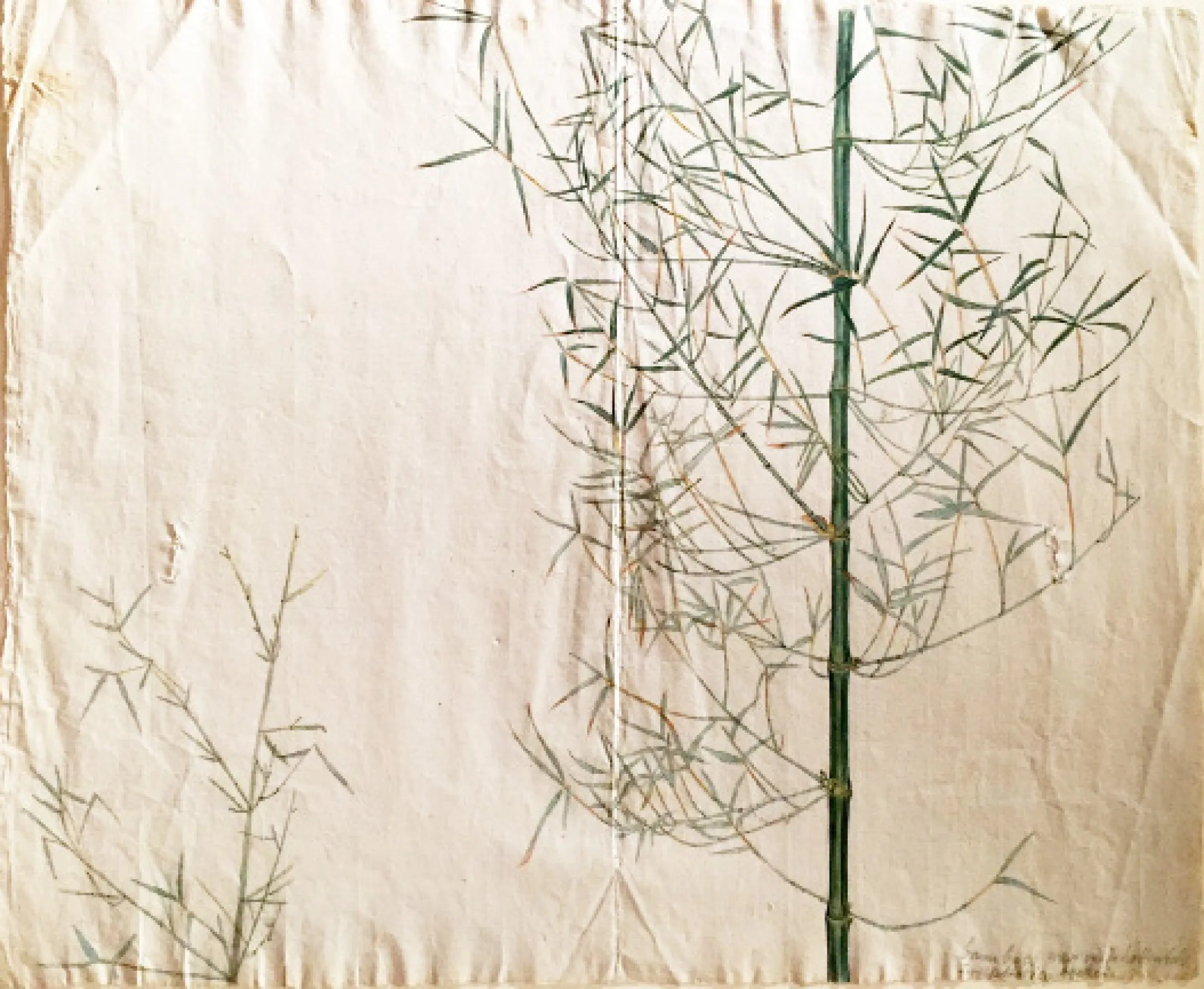Jan Brandes (Dutch, 1743-1808)
Bamboo
Watercolor, graphite, and ink on paper
ca. 1784
Paper size: 13 x 19 1/2 in.
The spirit of the Dutch Age of Enlightenment is embodied in the figure of Jan Brandes, a Lutheran minister who was employed by the Dutch East India Company (VOC). In Jonathan Israel’s 1995 publication, The Dutch Republic he described the Enlightenment as “a shift to toleration, secularization, classification of knowledge, and popularization.” Protestantism, and particularly that worshipped by the Lutheran Church, abhorred idolaterism and this was reflected in the secularization of the arts and thus, the popularization of landscape and still life painting. Jan Brandes was a product of this philosophy and created a valuable collection of drawings of the VOC’s settlements in what is now Java, South Africa and Sri Lanka.
Brandes was born in Bodegraven in Gelderland (in what is now the Netherlands) in 1743, as one of four children of Jan Conrad Brandes, keeper of a boarding school, and Maria Hoogeveen. He attended Latin school at Breda and continued his studies in Lutheran theology at Leiden in 1763. Two years later he moved to Greifswald, in the Swedish Pommerania, to complete his education. After returning to the Low Countries in 1767, Brandes quickly received a position as a parish minister to the Lutheran congregation in Doetinchem. Here, he remained for eight years until moving to Batavia (now Jakarta, Java) upon the recommendation of Amsterdam’s Lutheran church council, where he became a reverend in the service of the Dutch East India Company (VOC) until 1785.
Brandes remained in Java for six years and then moved on to minister to VOC communities in Sri Lanka and South Africa, before returning home in 1787. As strongholds of the Dutch East India Company, both had thriving Dutch communities in Colombo and Cape Town respectively, which required the services of a minister. However, Brandes’s talents extended beyond that of a preacher to drawing, and he produced a valuable and insightful collection of studies of both areas. His curiosity was such that he recorded everything he saw and on occasion described Javanese, Singalese and African social culture. His study was truly exemplary and remains a testament to the Dutch Enlightenment. In later life, Jan Brandes settled in Sweden, becoming a wealthy burgher, but continued his passion for recording his surroundings.
The Rijksmuseum, Amsterdam now holds many of the Brandes watercolors, and thus this represents a rare opportunity to acquire works by this particular artist.
or by email at















